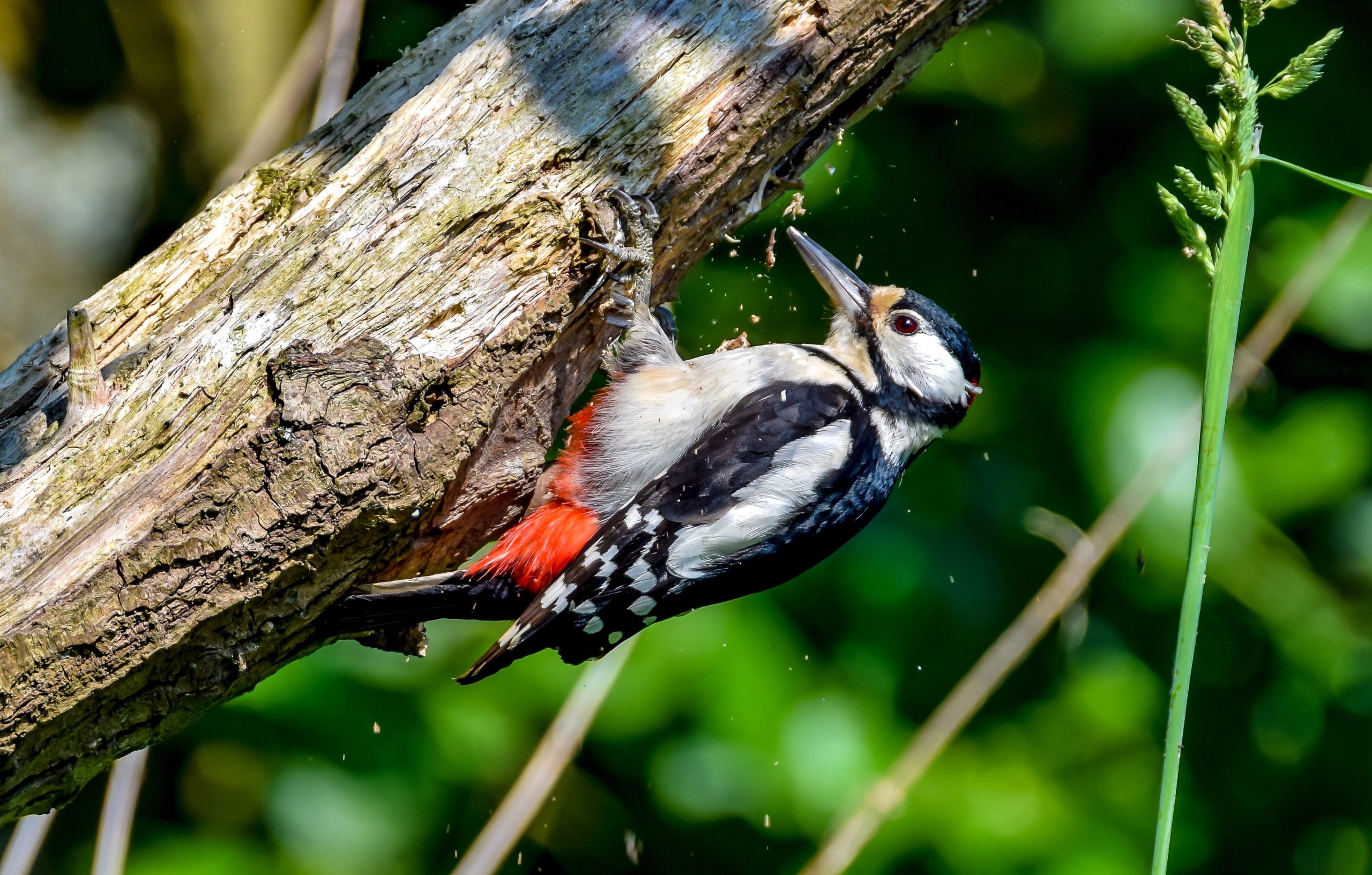
Over the years, we’ve dealt with more than our fair share of nuisance wild animals both big and small, both crawling and flying, and we’ve seen a lot of what the animal kingdom has to offer. A question we often get is what you can do, as a homeowner, to keep woodpeckers away. Aside from raccoons, skunks, rats, and other common critters, woodpeckers can be quite bothersome, and create trouble for you and your family. So in this article, we’ll show you how to keep woodpeckers away for good. Be warned, however, that any type of wildlife protection, rather than being solved in one go, is an ongoing process. You will regularly need to come back, and check that the preventive measures you put in are still in working order and that no new issues have come up.
Right, so how can you prevent woodpeckers?
1. Figure out what they’re foraging for.
Woodpeckers can actually be quite helpful in signaling an underlying problem. Since woodpeckers are omnivores, they will eat practically anything, including termites, ants, and other such insects dwelling inside the home. To do that, they will peck at the walls.
Now, take a moment to examine the holes made by the woodpeckers. Small, circular intrusions are most common when a woodpecker is trying to get at insects inside the walls of your home, and the best way to get rid of the woodpeckers is to also remove the termites, ants, etc.
Use insecticides as necessary, or reach out to a professional pest control company, since termites and other wall-dwelling critters can be quite resilient, and difficult to kill.
2. Set up a woodpecker feeder further from your home.
In treating your woodpecker problem, it’s important to aim at the source – why are woodpeckers pecking your home? Food. By setting up an alternative source, you give them an option to leave your home alone. Set up a woodpecker feeder to act as a decoy, and lure the birds away from your home. Replace the food regularly, to keep them rooted in that one place.
This is a particularly useful preventive measure, since woodpeckers like nesting near the source of their food, so by setting up a woodpecker feeder further from home, you’re encouraging them to set up camp far.
3. Try a sound deterrent.
Another great way to discourage birds and prevent woodpecker damage to the house is by using a sound deterrent. This is practically a device that you can purchase at most specialty stores. It’s motion-activated, and when it registers unusual movement around the house, it will emit a high-pitched noise, tailored specifically for woodpecker ears that is unpleasant and disruptive. Most nuisance wildlife doesn’t like living in a place that’s inhospitable and aggressive, so by bothering them with this specific sound enough times, you’ll see quite serious success in ridding your home of woodpeckers.
4. Use bird netting.
A big favorite for deterring birds is the installation of a bird net around your home. Since this net will be soft and malleable, this will make it difficult for woodpeckers or other birds to nest on top of it. Place the net a good few inches from the walls and roof themselves, to make sure they can’t peck through the gaps in the netting.
If you’re worried about woodpeckers attacking your fruit trees, you might also want to try putting protective bird netting around your trees and bushes, as well.
5. Give bird spikes a try.
As we were saying, woodpeckers like to live close by to their main source of food, which in this case is your home. But if they’ve got nowhere to roost, they may be inclined to leave your home alone. To discourage them, put up bird spikes on the shingles, and any other roosting areas. Don’t worry about hurting the woodpeckers – birds are clever enough to know not to sit on sharp spikes.
6. Call for help.
If all else fails, or if you just don’t want to bother yourself trying different DIY preventive measures with dubious chances of success, do yourself a favor, and call a professional wildlife removal team like First Choice Wildlife Services. Wildlife removal experts will be able to rapidly assess the situation, determine what’s attracting the woodpeckers (and hopefully fix that as well!), and get rid of them.
Hey welcome to my blog . I am a modern women who love to share any tips on lifestyle, health, travel. Hope you join me in this journey!

Speak Your Mind